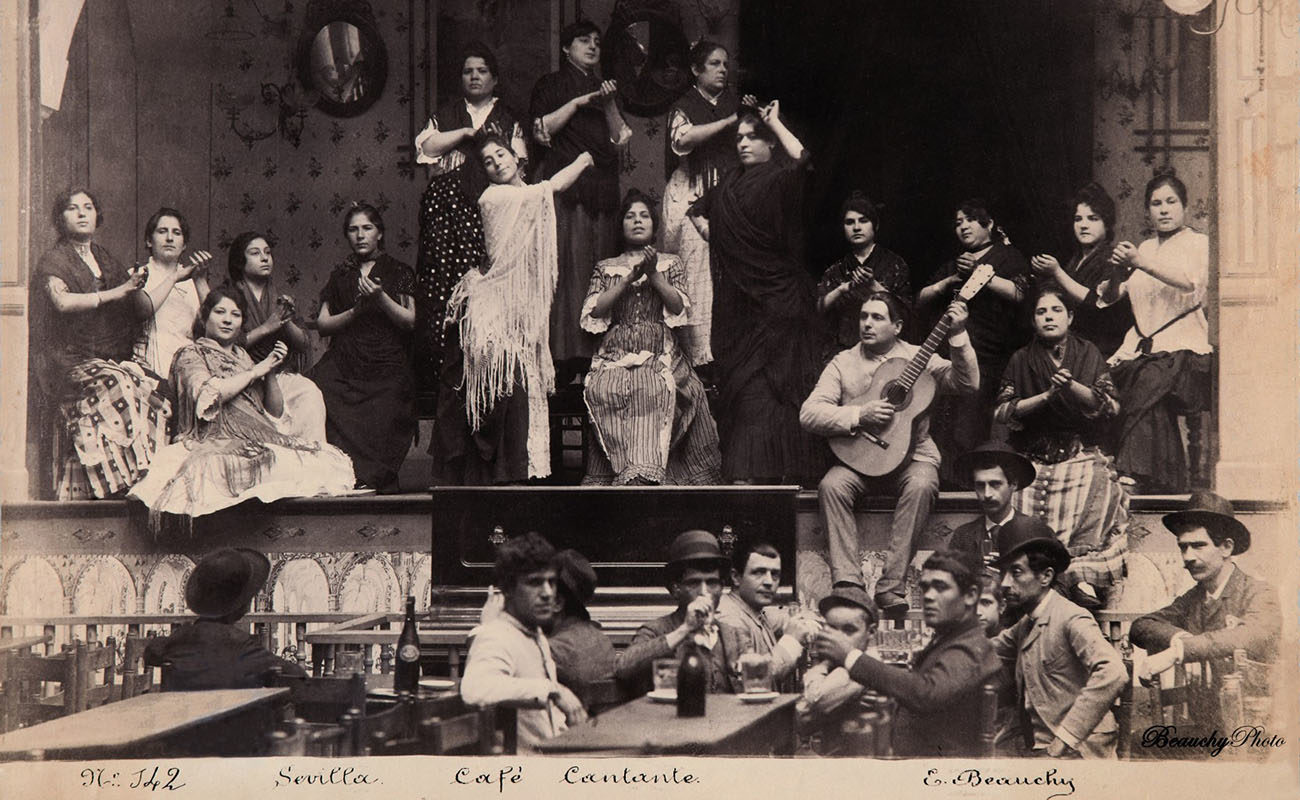Manuel Ojeda El Burrero
Café del Burrero was the most famous café flamenco, together with Salón Silverio and, a little later, Salón Novedades. Seville has forgotten Manuel Ojeda ‘El Burrero’, just as it has forgotten Silverio, Juan de Dios and López Olea, and that’s how history has been written.

Seville forgets its people in a shameful way. The history of flamenco couldn’t be told without dedicating one of its main chapters to Manuel Ojeda Rodríguez, El Burrero, a pioneer in the creation of the cafés cantantes together with Silverio Franconetti. The story of Don Manuel deserves a book, a very thick one, which should be written one day. He was from Seville’s La Macarena district, and had a very entrepreneurial spirit since a very young age. Apparently, when he was young, he sold leche de burra (donkey milk), and that’s how he got his nickname El Burrero.
He was an aficionado of Seville’s cante and baile, and one day he figured he would open a venue to offer art to the guiris, that is, the foreigners, since he noticed they would spend good money visiting the bolero academies of Miguel and Manuel de la Barrera, Botella and other boleros in the city of Seville. Since the 1840s, the Salón Recreo had been located on Tarifa Street, in the Campana district, at the heart of the city. At the time, it was leased by the bolero from Antequera (Málaga) — although he had grown up in Seville —, Miguel de la Barrera y Quintana, who was not a brother of Manuel de la Barrera y Valladares, as it’s often said. People would talk about the “Barrera brothers”, because Miguel had a brother, Cayetano, who was also a bolero.
The Salón Recreo was located in the corner of Amor de Dios street, on the ground level of a huge house on Tarifa Street. It was also known as Salón de la Escalerilla (Hall of the Little Staircase), since people entered the venue by climbing up a spiral staircase. The problem was not climbing up but climbing down instead. If people had too many drinks, as was often the case, they may end up of at the first-aid station on Alameda de Hércules, as it happened several times. Either due to a fall, or due to a knife slash, since brawls were common, caused by wine, jealousy or artistic rivalries.
All boleros and boleras of Seville performed in that venue for many years, joined by the cante of the best cantaores in the city, among them Silverio Franconetti himself, who was a friend of El Burrero. When Silverio came back from South America in 1854, he stayed in Cádiz but he would travel to Seville to perform in that venue and others in the capital of Andalusia. He was not an entrepreneur yet, but he was already thinking about starting his own business. Silverio performed at Salón Recreo in 1865, as advertised in the El Porvenir newspaper of March 25th, 1865, when he was joined by José Ordóñez, Juraco, a cantaor from Alcalá de Guadaíra.
Silverio would alternate these performances with trips to Madrid, to the Salón de Capellanes, for example, where he already performed as his own company. At the time, he was 35 years old, and very eager to make money, so he started to come out as an entrepreneur. In 1868, he would get married in Málaga to Ana Torrecilla, from Linares (Jaén). That’s when he decided to settle in Seville, his birthplace, living at Alameda de Hércules to be close to the halls, academies and cafes in that area. He would have two different addresses in Seville, one at Alameda de Hércules, and another on Potro street (renamed Ana Orantes Street in 2019), as he was the director of a café cantante on nearby Amor de Dios street, which was known as Café de Silverio, although he didn’t actually owned it
In 1871, Silverio already shows up as the director of the Salón Recreo, on Tarifa street, and that’s when he starts his business relationship with Manuel El Burrero. This venue then stopped being a sanctuary of the bolero school, becoming a café flamenco instead, which soon became famous as Café El Burrero, in honor of its owner. Silverio and Manuel were great aficionados of cante, although they had different tastes. Franconetti was partial to the Gypsy school, and loved Cádiz, Jerez and Los Puertos, while El Burrero preferred malagueñeros and malagueñeras, and elegant and slender dancers. After a few successful years, they decided to part ways and that’s when Silverio opened his own café, Salón Silverio, in 1881, located on number 4 Rosario Street in the heart of Seville.
El Burrero would remain on Tarifa Street until 1888, but business was going so bad, with competition from his old business partner, El Filarmónico and other venues, that he decided to play hard and relocate his café to 11 Sierpes Street, the best street in Seville. He was already tired of the harassment by the authorities, caused by the murder of El Canario in his summer venue, located by the Triana bridge, so he decided to lease what was the Military Casino in 1888, making the Café del Burrero as successful as it had been ten or twelve years earlier. Despite the scandal, Manuel succeeded, and his café made history in Seville.
He would not enjoy the good times for long, though, as he broke a hip when he lived on San Pablo Street (Reyes Católicos), causing a gangrene which led to his death at the beginning of the 20th century. That was the end of the story of his celebrated café cantante, the most famous café flamenco, together with Salón Silverio and, a little later, Salón Novedades. Seville has forgotten Manuel Ojeda El Burrero, just as it forgot Silverio, Juan de Dios and López Olea, and that’s how history has been written.
* Photo of the Café Cantante El Burrero taken by Emilio Beauchy Cano, c. 1881.




